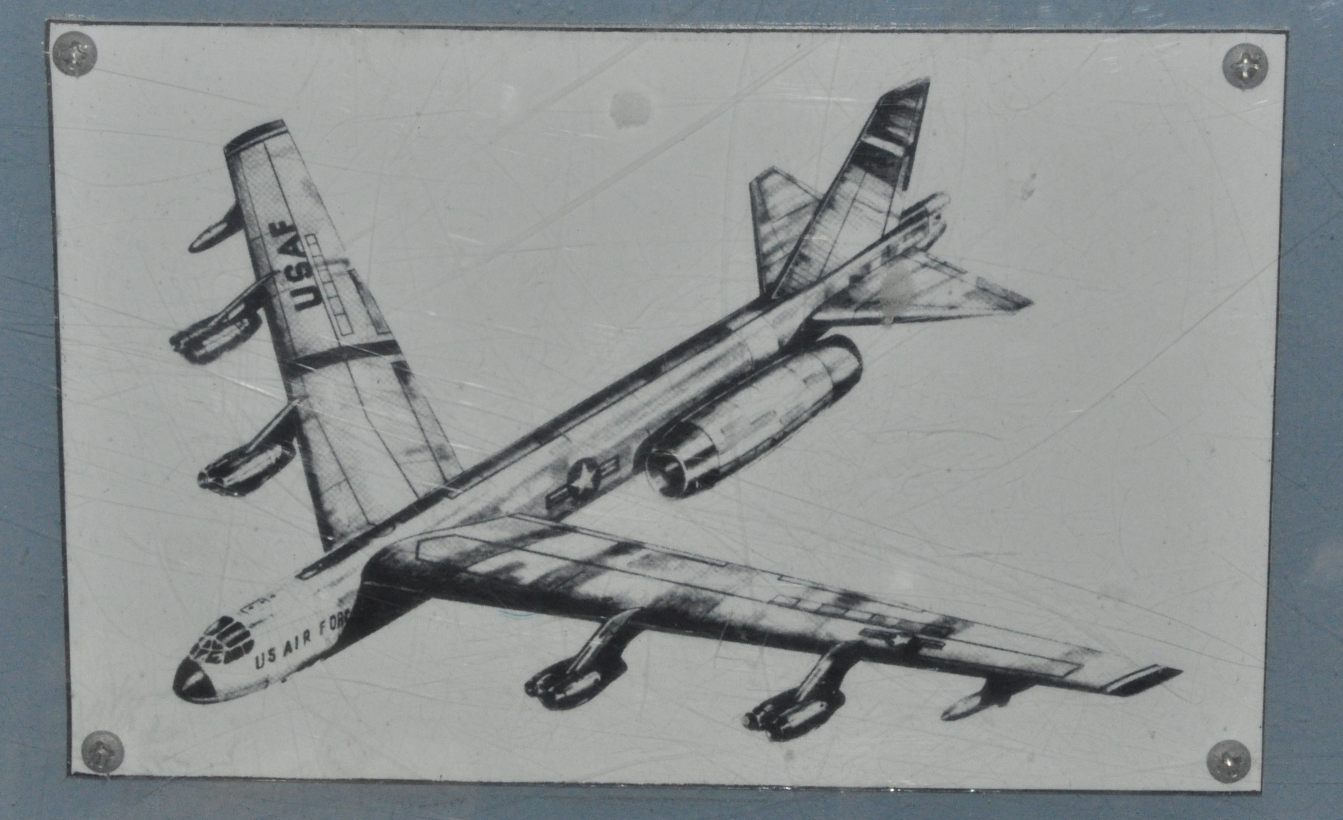Sep 262010
Shown at the informational kiosk for the Heat Transfer Reactor Experiment displays at the Idaho National Laboratory (conveniently located in the middle of nowhere – see here) is an illustration of a B-52 with a hugenormous engine nailed onto the port-rear fuselage. While it’s not described, the presumption is that this was an idea for a test flight for a nuclear powered turbojet (although I have doubts… it doesn’t really look like a good testbed for a nuke). As said, no further info than the picture below.
6 Responses to “Nuclear Powered B-52”
Sorry, the comment form is closed at this time.

Jesus Christ! Look at the size of that thing…I’d worry about the bottom of the horizontal tail fin if it really was a nuclear turbojet.
Maybe it’s supposed to be something like a nuclear turbofan, with fairly cool exhaust temperatures.
Whatever it is, it obviously can’t weigh all that much, for the sake of keeping the CG in the right place, even with a lot of ballast in the nose end.
as i saw the picture, got a laughing fit !
that engine pod is atlast 40 ft long
i think that had to be a test bed for WS-125A engine
if the program had go on…
DAM during my laughing fit, i overlook this:
>the Heat Transfer Reactor Experiment
that’s most be flighttest for a HTRE
it would give a explanation were the “Lot of ballast” are and wat it is.
a nuclear reactor in bombbay of B-52
Yeah, but the problem would be that to get it to balance right, you would have to put it in the front of the forward bomb bay, and that would be getting it awfully near the crew.
Back when I was a FAA weather observor out at our local airport, one of my co-workers was a former Air Force jet engine mechanic (actuallly got to do a crash landing in a B-52 once), and he talked about some sort of giant experimental jet engine they showed films of that relied on sucking ionised air through it to generate thrust. his description of its size sounds very similer to the size of this thing. I thought he was making it all up, but after seeing this drawing, I’m not so sure.
That would account for why it can exhaust under the tail fin without worrying about heat damage; the air would be coming out at pretty much ambient air tempetrature.
It also might explain the balance problem; though huge in size, it may not weigh all that much, being a big empty duct with a series of elecrical discharge grids inside of it that incremenatally increase the velocity of the ionized air as it heads towards the exhaust end of the engine.
One problem would be where you would get the electrical power from to drive a thing like this.
On the other hand, as it doesn’t rely on atmospheric oxygen to burn with fuel to generate thrust, it could have a very high ceiling on it.
[…] shown but not understood HERE, in 1961 GE proposed modifying a B-52G to serve as a testbed for a single XNJ140E-1 nuclear […]
[…] shown but not understood HERE, in 1961 GE proposed modifying a B-52G to serve as a testbed for a single XNJ140E-1 nuclear […]